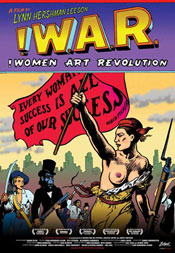Invite Your Viewers to Read the Screen
Today’s editing tip is a simple one, of which far too many filmmakers and editors are unaware, leaving viewers like me befuddled.
But first, two quick announcements. I’m beginning a new Inner Circle on October 15th, one month from today. If you’re interested in finding out more about this transformative six-month mastermind program, limited to five qualified filmmakers, e-mail me or click here for early bird pricing registration. You’ll save $400 if you register soon:
https://newdocediting.com/land/innercircle/
Second, if your documentary features strong characters, join our free tele-seminar “Editing Character Transformation in Your Documentary” on September 20, 2011, 5-5:30 pm PST. If you can’t make the date, we’ll send you the recording, but you need to register at:
https://newdocediting.com/crafting-character-transformation-teleseminar/
Now… back to today’s editing tip about the best way to present text on screen. As I said, even seasoned filmmakers miss the mark.
Case in point.
Last week my girlfriend and I watched Lynn Hershman’s Sundance hit, W.A.R. (!Women Art Revolution – A Secret History), now playing in select theaters. Hershman, an acclaimed veteran filmmaker, directed a historical documentary that reveals the untold history of the feminist art movement.
One of the most interesting parts of the saga was the emergence in 1985 of the so-called Guerrilla Girls, an activist group that made fun of the sexist art establishment, partly through clever posters.
In the film, Hershman cuts to several of these clever posters, but unfortunately I was unable to finish reading the humorous text.
Why?
Because the voiceover that I was hearing interfered with my attempts to read the funny lines.
My brain couldn’t simultaneously process both complex language tasks (reading and listening). Nor can most viewers.
So here are three rules of thumb for editing a textual document (or simply text on screen) that you want your viewer to actually read:
1. When editing textual material, keep your audio track free of dialogue for several seconds (no narration or voiceover). Instead, use music, sound effects and/or ambient sound while the document is on-screen. The exception is if there are only 1 to 4 words to read. Most viewers can process 1 to 4 words simultaneously with voiceover. If you have to use narration, then write it so that the words closely mirror the words that appear on screen.
2. Leave the documents or text on screen long enough to either read out loud once, or read silently twice. That way, even slow readers will have enough time to finish reading.
3. Make sure key words are highlighted and are large enough to read.
If you don’t care if your viewer reads the text on screen, know this: your viewer will try to. Unless the text is so small that it’s a real strain to read, most viewers naturally begin reading text on screen, which unfortunately draws their attention away from the voiceover you want them to hear.
The good news is that combining textual documents with music and/or other ambient sound gives your film breathing room. Which it can probably use.
I hope you found this editing tip helpful. If you’d like a more professional editing tips, register for our free tele-seminar to learn the four critical steps of crafting character transformation:
https://newdocediting.com/crafting-character-transformation-teleseminar/
Also…please e-mail me right away if you’re interested in our upcoming Inner Circle, a six-month program beginning October 15th. You’ll receive professional story consulting for your film, as well as heartfelt peer support. Both are needed in the sometimes lonely world of independent film making. To receive the early bird discount, register at:
